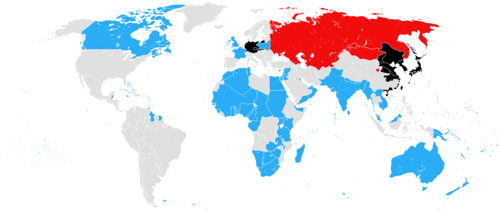
| Timelines of World War II |
|---|
| Chronological |
| By topic |
| By theatre |
| World War II |
|---|
| Navigation |
This is a timeline of events of World War II in 1939 from the start of the war on 1 September 1939. For events preceding September 1, 1939, see the timeline of events preceding World War II.
Contents
Germany's invasion of Poland on 1 September 1939 brought many countries into the war. This event, and the declaration of war by France and Britain two days later, mark the beginning of World War II. After the declaration of war, Western Europe saw minimal land and air warfare, leading to this time period being termed the "Phoney War". At sea, this time period saw the opening stages of the Battle of the Atlantic.
In eastern Europe, however, the agreement between the Soviet Union and Nazi Germany signed on 23 August opened the way in September for the Soviet Union's invasion of eastern Poland, which was divided between the two countries before the end of the month. The Soviet Union began a new military offensive by invading Finland at the end of November. France and Britain provided minimal physical support to Poland during the invasion.
The war in East Asia among the Republic of China and the Empire of Japan reached a stalemate, while increasing clashes between Japan and the Soviet Union ended when the two parties agreed in September on a ceasefire.

